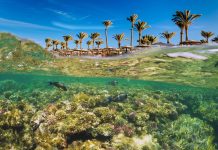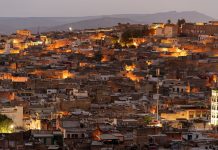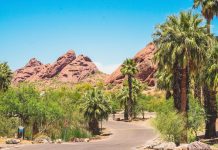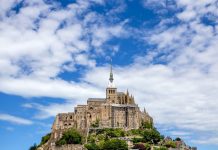Has anyone ever achieved to give a living form to your imagination, well that’ll be Gaudi for me and he was reason enough to visit Barcelona! Gaudi’s work is considered by architects from around the world for his unique and distinctive. His works has influenced the architectural appearance of Barcelona and you can see Gaudi’s work throughout the city. Antoni Gaudi was born in Reus in 1852 and graduated in Architecture in 1878.From the beginning, his works were different from those of his contemporaries for they were greatly influenced by forms of nature and this is reflected in the use of stones in a wavy way, curved iron for the sculptures, and organic forms that are characteristic of the architecture of Gaudi in Barcelona. Gaudi also adorned many of his buildings with colored tiles arranged in mosaic. This is another important aspect of its buildings, which is often overlooked by architects, the use of effervescent color. The combination of original, interesting shaped stonework and vibrant colors in Gaudi’s work gives the viewer a visual experience truly breathtaking. To give you an idea of his style I have prepared a review of the work of Gaudi in Barcelona.
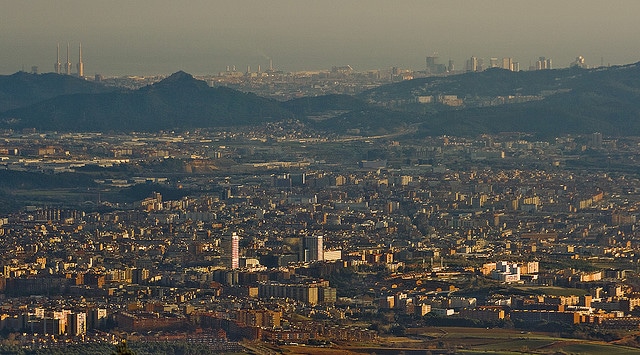
The Sagrada Familia is one of the most famous work of Gaudi in Barcelona. A giant Bascilica under construction since 1882 and will not be completed before 30/80 years (the time to complete the work varies on the source of information. When you visit the building you see the contrast between the color of the stones on the front and back of the building. Even the actual style of construction appears somewhat different than the old parts of the building. Gaudi took an active role in directing the construction of the Sagrada Familia, until his death in 1926. The work often required to be modified and adjusted until it reflected exactly the idea. Today, however, given the nature of the existing drawings, in part his work is to be interpreted. The interpretation of his designs by the architects of today is a particularly difficult challenge because of the irregular shape of the building stones. The building is still under construction so be prepared to see a lot of work in progress during the visit. However, it is interesting, especially if you visit the museum inside the building.
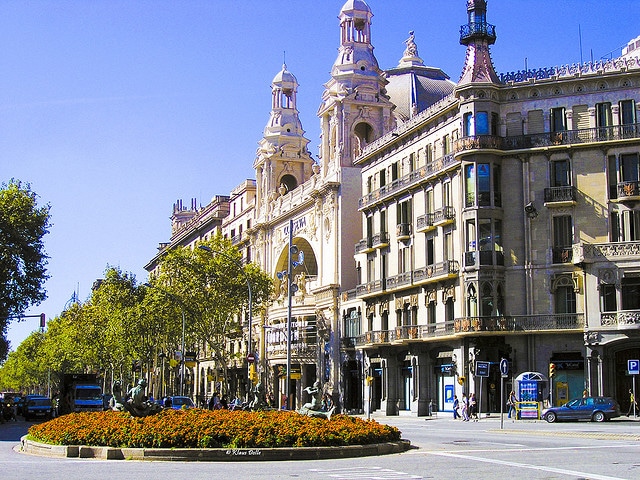
The Park Guell was commissioned by Eusebi Güell who wanted to create a stylish park for Barcelona aristocracy. It has beautiful stone structures and fascinating buildings especially the fountain in the shape of a dragon at its entrance. The dragon is decorated with beautiful colored tiles and has something hypnotic and magical. There is also a walk, supported by pillars of rock that seem to wrap it of the ground like tree trunks, although they have a quite irregular shape the sight seems strangely natural. On top of the Guell Park area there is a terrace from where you have a wonderful view of the park and the city of Barcelona. Here you will find benches covered with a multicolored mosaic. The vibrant colors of the tiles are truly breathtaking. Inside there is also a small house where Gaudi lived which has now been converted into a museum and contains within it interesting furniture designed by him.
And last my personal favorite…a “house” out of a fairy tale, fit for elves! Casa Batlló is one of the two large buildings designed by Antoni Gaudi on Passeig de Gracia, the other is La Pedrera. From the outside the façade of Casa Batlló seems to be made of skulls and bones. The “Skulls” are in fact balconies and the “bones” the supporting pillars. Gaudi has used colors and forms of marine life taken as inspiration for his creativity in this building, for example, the colors chosen for the façade are those of the natural coral. The building was designed by Gaudi for Josep Batlló, a wealthy aristocrat, as the exclusive residence. Mr. Batlló lived in the two lower floors with the family while the upper floors were rented as apartments. This is a stunning and original building that deserves to be visited. If you decide to take a look inside you’ll learn what Gaudi was attentive to detail in the drawings, for example, has decided to change the window size depending on how far they were from the top of the building. In this way he could ensure even lighting in every room of the house.
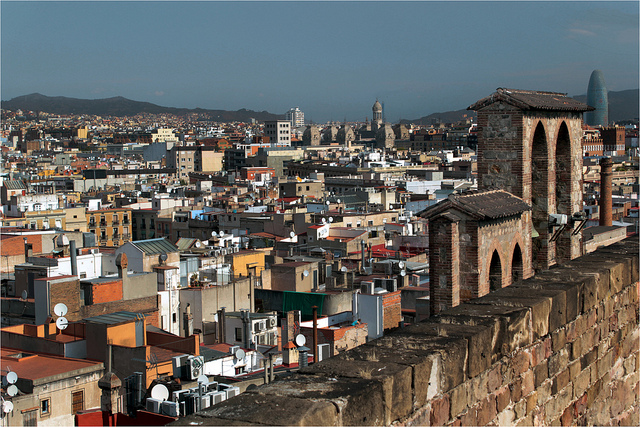
Certainly though the city has much more to give…imagine that just in September and October you can come across a number of events such as the National Holiday of Catalonia in September 11nth where concerts, demonstrations and demonstrations in the streets on the feast of the region. The Asian Festival from 16 to September 25 where they celebrate the Asian culture in the heart of Barcelona with more than 30 shows and various activities including music, theater, dance, film, fashion, sports and gastronomy. The Merce Festival from 22 to September 25, a true festival Catalan, with traditional human towers, beach events, parades, concerts, shows and various fairs where you can enjoy the finest local produce. The BAM Festival , 22 September to 24 with dance performances and concerts of various music throughout Barcelona as part of the celebrations of goods . October is an art month with films and jazz festivals.
Barcelona has more than 80 museums and I visited quite a number of them only one brought me back to my childhood: the chocolate museum. There you can taste the best chocolates in the region, but also discover the history of cocoa, the different methods to produce the chocolate, as well as sculptures, one more impressive than the other. You start by Lucky Luck to the Camp Nou stadium, passing Asterix, Don Quixote and SpongeBob SquarePants, up to the fountain shaped like a salamander in the Park Güell. There’s something for everyone and you will melt like chocolate in front of the precision and detail of these sculptures.
Well folks I think I made my point clear…I LOVED BARCELONA!!!
By Ina K



